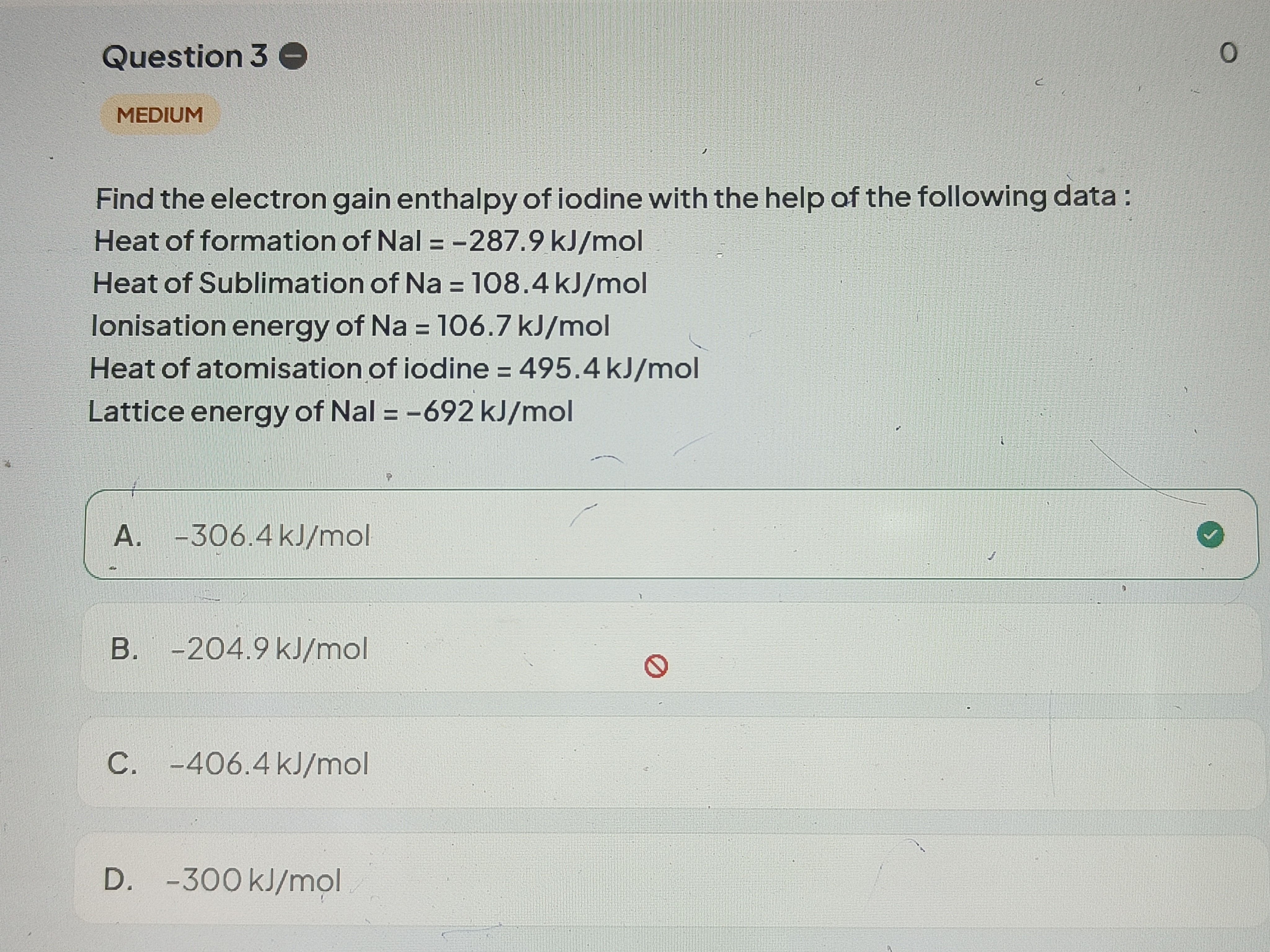Question
Question: Find the electron gain enthalpy of iodine with the help of the following data: Heat of formation of ...
Find the electron gain enthalpy of iodine with the help of the following data: Heat of formation of NaI = -287.9 kJ/mol Heat of Sublimation of Na = 108.4 kJ/mol Ionisation energy of Na = 106.7 kJ/mol Heat of atomisation of iodine = 495.4 kJ/mol Lattice energy of NaI = -692 kJ/mol

-306.4 kJ/mol
-204.9 kJ/mol
-406.4 kJ/mol
-300 kJ/mol
-306.4 kJ/mol
Solution
The problem can be solved using the Born-Haber cycle, which relates the enthalpy of formation of an ionic compound to various energy terms. The cycle for the formation of NaI is as follows: Na(s)+21I2(s)→NaI(s) ; ΔHf=−287.9 kJ/mol
The individual steps in the Born-Haber cycle are:
- Sublimation of Sodium: Na(s)→Na(g) ; ΔHsub=+108.4 kJ/mol
- Ionisation of Sodium: Na(g)→Na+(g)+e− ; ΔHIE=+106.7 kJ/mol
- Atomisation of Iodine: 21I2(s)→I(g) ; ΔHatom_I=495.4 kJ/mol
- Electron Gain by Iodine: I(g)+e−→I−(g) ; ΔHelectron gain (This is what we need to find)
- Lattice Formation: Na+(g)+I−(g)→NaI(s) ; ΔHlattice=−692 kJ/mol
According to Hess's Law, the sum of the enthalpy changes of these steps equals the enthalpy of formation of NaI: ΔHf=ΔHsub+ΔHIE+ΔHatom_I+ΔHelectron gain+ΔHlattice
Substituting the given values into the equation: −287.9=108.4+106.7+495.4+ΔHelectron gain+(−692)
Rearranging to solve for ΔHelectron gain: ΔHelectron gain=ΔHf−ΔHsub−ΔHIE−ΔHatom_I−ΔHlattice ΔHelectron gain=(−287.9)−(108.4)−(106.7)−(495.4)−(−692) ΔHelectron gain=−287.9−108.4−106.7−495.4+692 ΔHelectron gain=−998.4+692 ΔHelectron gain=−306.4 kJ/mol
